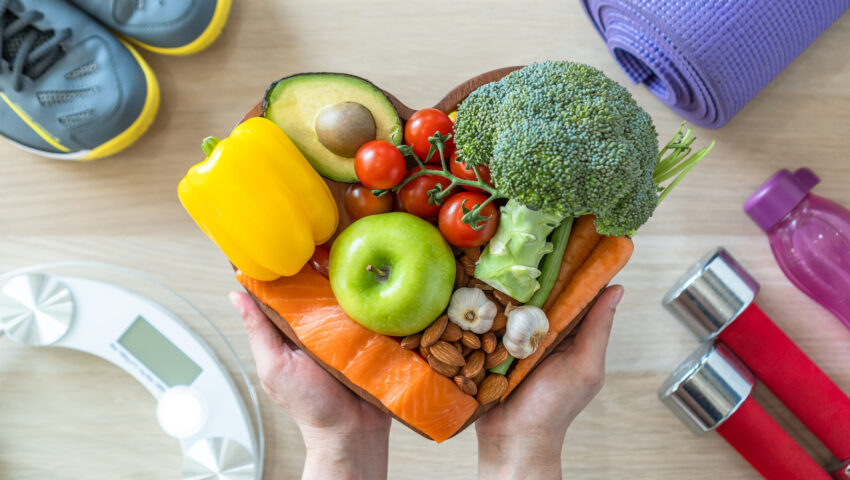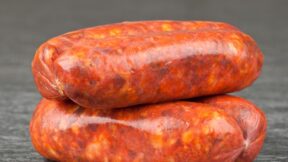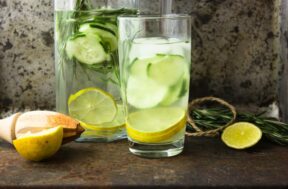Blogs
Women’s Health Month

Women’s dietary requirements differ from men’s, one of the reasons is due to the hormones we produce throughout the different stages of life such as menstruation, pregnancy, lactating, and later in life, menopause.
UK government dietary recommendations for adult women (daily) are:
| Energy | 2000kcal |
| Fat | No more than 78g (35% food energy) |
| Saturated fat | No more than 24g (11% food energy) |
| Carbohydrate | At least 267g (50% food energy) |
| Free sugars | No more than 27g (5% food energy) |
| Protein | 45g |
| Fibre | 30g |
| Salt | No more than 6g |
There is no ‘one-size fits all’ – these are recommendations to help us achieve a healthy balanced diet. We are all unique and our lifestyles will vary, such as how physically active we are, therefore these need to be adapted to meet individual needs.
Some key nutrients for women’s health
Iron
- An important mineral in the production of red blood cells that carry oxygen in the body around the body as well as support our immune system and prevent tiredness.
- Our requirements for Iron increase during menstruation as the body uses up iron reserves.
- Insufficient amounts can lead to deficiencies such as Anaemia
- You can increase the amount of Iron available and absorbed by the body by also consuming foods high in Vitamin C.
- Iron absorption can be hindered by the consumption of some drinks we have with our meals such as alcohol, tea, and coffee!
Top tip: always opt for water or a vitamin-C-rich drink where possible.
Sources: red meat, poultry, fish, fortified cereals, nuts, and dark leafy green vegetables (i.e., broccoli and spinach).
Calcium
- Important to the development of healthy bones and teeth.
- Calcium is important during pregnancy and breastfeeding for the baby’s development, but it also helps protect the mother’s bones, as their skeleton can be used as calcium reserve.
- Did you know? In the UK, 1 in 10 Women has inadequate intake of Calcium, which can lead to the development of osteoporosis later in life.
- To help aid calcium absorption in the body, also consume foods rich in Vitamin D.
Sources: dairy products, nuts, and soya beans.
Folic Acid (Folate)
- It is needed for the growth and development of new cells.
- There is an increased requirement during pregnancy to support the baby’s growth and development. It also prevents the risk of the baby developing neural tube defects such as spina bifida.
Sources: fruit, vegetables, legumes, nuts, and fortified foods such as bread and cereals.
Omega 3 Fatty Acids
- Important for the brain, eye, and heart health.
- In the UK, 1 in 11 women pass away from heart disease.
- It is recommended we should be aiming to consume at least one portion of oily fish (140g) weekly, currently, the average weekly for women is 56g!
- Not only does Omega 3 help with the development of the baby’s brain and eyes during pregnancy, but studies have suggested that omega 3 can have a positive role in preventing menstrual syndrome and postmenopausal hot flushes.
Sources: oily fish (i.e., Salmon, Mackerel), nuts and seeds (i.e., walnuts, pumpkin seeds, chia seeds), Vegetable oils (rapeseed oil), and fortified products.
Pregnancy
This is a special time, but one of immense change. Many women start to think about the importance of their diet and health, as it impacts you but can also affect the short and long-term health of their babies.
My top tips during pregnancy
- Try to eat a varied diet, use the Eat Well Guide to ensure your diet contains all the key five food groups.
- Include foods rich in Calcium and Iron.
- Check the NHS and British Nutrition website for foods you need to avoid or limit.
- Take part in regular light exercise
Always consult your doctor or midwife beforehand.
If exercise isn’t a part of your normal daily routine, gradually build up for 30minutes.
If you like social and group exercises, check out your nearest antenatal classes.
Menopause
This is a natural part of the ageing process for us women, it tends to start around our 50s.
Most common symptoms include hot flushes and night sweats.
Studies have found that two portions of soya beans or other soya bean-based products can help ease the severity of hot flushes and their frequency when they are consumed within a healthy balanced diet.
Two portions of soya bean/ soya bean-based products could be:
- 100g Edamame Beans
- 200g Soya based yoghurt.
My top tips during menopause
- Postmenopausal women are at higher risk of cardiovascular disease.
It is therefore important to eat a diet that includes your 5aDay, foods rich in fibre, more fish, beans, and pulses where possible.
- Menopause can accelerate the age-related decline in bone density, therefore, increasing the risk of osteoporosis.
Aim to consume 2-3 portions of calcium-rich foods a day (don’t forget – couple up with Vitamin D rich foods to help aid the absorption of calcium)
- Reduce your caffeine and alcohol consumption as these can exacerbate symptoms of menopause i.e. hot flushes.
- Exercise regularly- important for our health such as reducing the risk of cardiovascular disease but can also help our bone health.
References and further reading:
https://www.nutrition.org.uk/life-stages/women/nutrition-recommendations-for-women/
https://www.nutrition.org.uk/life-stages/women/menopause/
https://www.nutritionist-resource.org.uk/articles/womens-nutrition.html
https://www.bda.uk.com/resource/calcium.html
https://www.nhs.uk/pregnancy/keeping-well/foods-to-avoid/
Tang S, Du Y, Oh C, No J.( 2020) Effects of Soy Foods in Postmenopausal Women: A Focus on Osteosarcopenia and Obesity. J Obes Metab Syndr.
Bourre, J. (2007), Dietary omega3 fatty acids for women. Biomedical & Pharmacotherapy.
Listen to Charlotte talking about women’s health month




